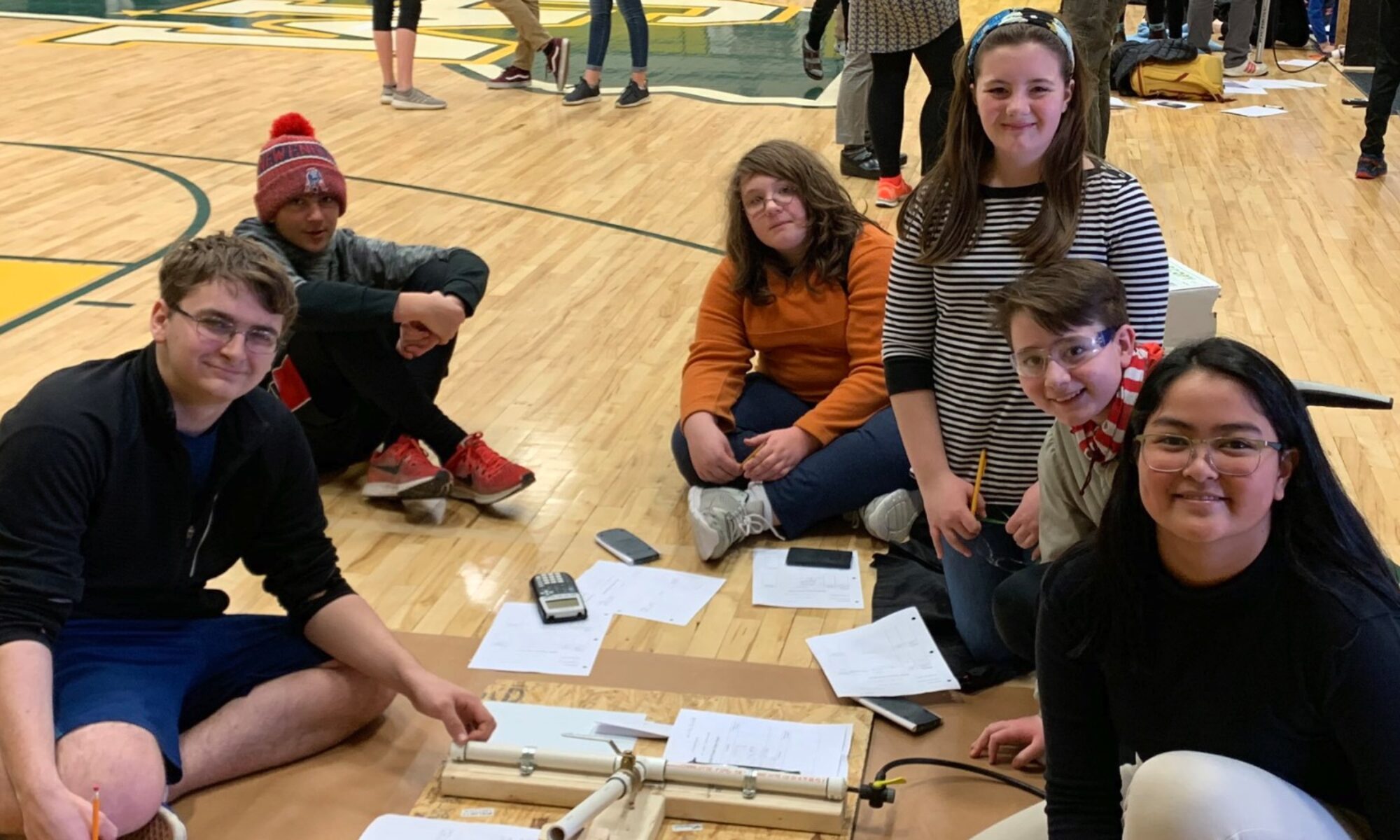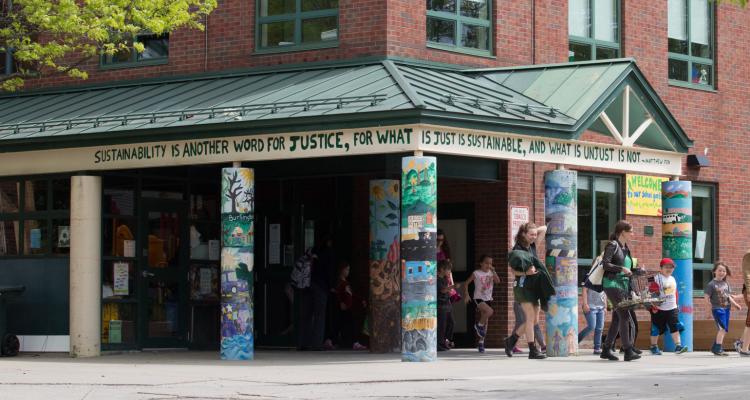Middle school students are ever-changing, curious, socially and globally aware, and incredibly capable. Their energy and urge to explore can be channeled into rich and fertile learning territory. It’s such a privilege to walk alongside them as they grow during these often tumultuous years.
Folks often say it takes a special kind of person to teach at the middle level (count me in). It also takes a particular approach to teaching to best meet the academic, social, emotional, and cognitive and individual needs of this age group.
Now, we’re big fans of the Association for Middle Level Education’s foundational position paper The Successful Middle School: This We Believe. (Not familiar with this paper? Then check out the #vted Reads podcast episode where Jeanie Phillips talks with co-author, our own Penny Bishop.)
I recently sat down for some quality time with the revised 5th edition of this book. It left me feeling so inspired and excited about the alignment between this book and another one of my passions: Education for Sustainability.
While The Successful Middle School dives clearly into the what and the why of promising practices in middle-level education, Education for Sustainability (EFS) can be a powerful ally when it comes to the how.
“Early adolescence is a time of considerable moral development, and issues of equity, injustice, and sustainability are important fodder for middle school curriculum. Students benefit from seeing that their work can make a difference in the world around them.” The Successful Middle School p.38
Ok, so then, what is Education for Sustainability?
Before we get to defining Education for Sustainability, let’s get clear on what we mean by ‘sustainability.’
Often the word brings to mind things like recycling or solar panels. Those things are part of the story… but only part.
When we’re talking about sustainability, we’re talking about three core concepts, often called the 3 E’s of sustainability:
- environment
- equity
- economy.
More specifically, we’re looking for the intersection of economic vitality, ecological integrity and social equity. Find the balance where each of these criteria are met, and that’s the center of sustainability.
So when we talk about Education for Sustainability (EFS), we’re talking about an approach to education that engages students in authentic and meaningful learning that strives to create conditions for sustainability.
EFS links inquiry and action through:
- Rooting learning in the natural and human communities that students are part of,
- Helping students develop their understanding of systems and interconnectedness, and
- Engaging students in making a difference in their own communities, here and now.
Through these place-based service-learning opportunities, students begin to develop a deep connection to place and community and sense of agency.
Through Education for Sustainability, we can nurture the development of community members engaged in creating sustainable and democratic communities.
The successful, sustainable middle school
Central to both effective middle level education and Education for Sustainability is the importance of a whole-child approach. Both prioritize nurturing students’ sense of wellbeing, as well as their academic growth. Both approaches also signal the importance of providing opportunities for students to participate as active citizens in their local and global communities.
“[Students] engage in active citizenship by participating in endeavors that serve and benefit [their] communities, such as exploring more socially just and ecologically sustainable ways of living.” The Successful Middle School, p.5
But that’s not all! Both approaches cite the importance of a thriving culture, opportunities for powerful collaboration within and beyond the walls of the school, and authentic and meaningful learning opportunities developed in partnership with students.
Culture, community…
Arguably, the most important ingredient in thriving schools is strong and caring relationships. It’s the secret sauce that holds it all together. Relationships are crucial. Students should be rooted in caring relationships within and beyond schools. Students are seen. Their multiple identities are honored and valued. And students are recognized as the capable and creative young people they are through engaging them as partners in the learning. We take them seriously and make room for them to shine.
We also value the power of collaboration. Middle grades students are social creatures by nature. Making space and supporting collaborative learning is both highly engaging and effective. And the collaboration doesn’t end with peers.
…and community partnerships
Not only do these strong relationships create a culture of safety and affirmation at school, but they extend out into the community. Community partnerships are key for creating authentic and meaningful learning.
“Genuine, innovative, and sustainable community partnerships are a fundamental component of successful schools for young adolescents.” The Successful Middle School p.21
“…these relationships are vital to connecting the curriculum to relevant, real-world issues.” Shelburne Farms’ Sustainable Schools Project
Community partnerships offer opportunities for students to engage in learning that makes a difference. This could look like collaborations on community gardens, community mural projects, or even addressing food insecurity or racial justice issues in the local community. By connecting with young adolescents questions about themselves, their community, and the world, learning becomes highly engaging and empowering.
And speaking of meaningful, relevant learning:
Successful, sustainable middle schools find leverage when they engage pedagogies that put students at the center.
“Negotiated curriculum, youth-adult partnerships, personalized learning, and YPAR offer well-established frameworks for engaging students meaningfully in their learning and in the world around them.” The Successful Middle School p.39
These approaches give students a sense of purpose. They also provide an authentic context through which to develop essential skills such as problem-solving, effective communication, collaboration, and self-direction. Exactly the kind of humans the world needs!
That sounds great. How do we pull it off?
EFS engages several student-centered pedagogies, including project-based learning, place-based learning, negotiated curriculum, and service-learning. It sounds like a lot.
But actually, these approaches blend together quite easily with impressive results.
When you engage students in generating questions about themselves, their community, and the world (negotiated curriculum + place-based education) and then use those questions to drive inquiry and action to make a difference here and now (project-based learning + service-learning), you get some personally meaningful, highly engaging, and civically-oriented learning.
Many teachers have found success using an EFS approach focusing on the UN’s 17 Goals for Sustainable Development. These Global Goals provide a powerful frame for taking local action for global impact. Students and community partners are working together to bring positive change to their communities
Curious to learn more about how to use Education for Sustainability in your classroom?
We’re excited to be partnering with Shelburne Farms to offer two courses this summer. Check out Foundations of Education for Sustainability and Education for Sustainability Immersion. We hope you join us!
Photo credit: Sustainability Academy, Burlington VT. Courtesy Shelburne Farms.


